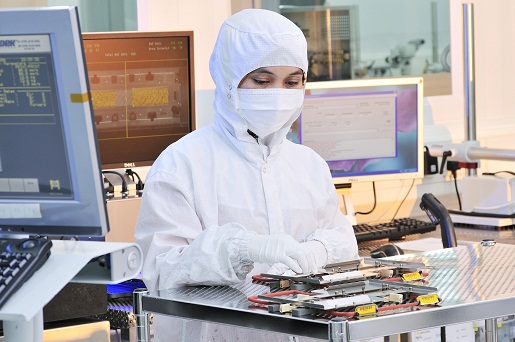Malaysia offers some manufacturing benefits over China

China might be known as the port of call for manufacturing, but global electronics company Flextronics believes Malaysia offers benefits in certain areas its Asian counterpart currently does not offer.
Mark Shandley, the company's vice president for supply chain management, noted during a recent interview that a good number of its customers do express a preference for manufacturing their products in Malaysia over China.
"Some of them are more comfortable with Malaysia because of the perception of intellectual protection, or what they believe is the lack of, in China," he explained. The executive declined to reveal the names of his customers due to non-disclosure agreements, but ZDNet Asia understands some of its clientele include global companies such as Apple and Hewlett-Packard.
Flextronics has 11 manufacturing facilities across Malaysia, with nearly half of them in the state of Penang and the rest in Selangor and Johor. Its Malaysia operations are part of a global production network across over 30 countries--largely in low-cost regions such as Brazil, China, India, Mexico, Poland and Ukraine.
Cost-efficiency differences
Despite the common perception of cheaper production costs in China, Shandley pointed out that it can be more cost-effective to consider manufacturing in Malaysia to reach Asian markets for some products.

China's labor costs might be relatively cheaper but Malaysia offers cost savings from other areas, which then leads to a better overall cost of a few cents per unit, he said. "One key reason is the taxes, such as China's value-added tax, which is charged on non-China companies and can be at about 4 percent. That is something which Malaysia doesn't have," he pointed out.
However, manufacturers in Malaysia will have to monitor its rising wage cost level in order to remain competitive. According to Shandley, Flextronics Malaysia has witnessed over 20 percent year-on-year increase in overall wages for both direct and non-direct labor, and this is before the impact of the country's new minimum wage law kicks in.
Two weeks ago, Malaysia introduced a minimum wage aimed at helping the lowest paid workers meet the rising cost of living. The new law would see workers receive a minimum wage of least 800 ringgit to 900 ringgit (US$255 to US$287), and would take effect for most companies in six months' time.
"There will be a little impact from the minimum wage but we'll look at it more closely in six months' time," the executive said.
High labor attrition rate in China
China, on the other hand, has to combat other labor-related difficulties beyond wages, the Flextronics executive pointed out. For instance, the industry's attrition rate after the Lunar New Year holidays is high as many of the production workers don't come back after returning home. Some of the reasons for this include people finding a new job or being homesick, he explained.
Shandley noted that, on average, the industry see as little as 30 percent their labor force return after the holiday. Flextronics used to suffer from a similar problem but has managed to bring down the overall rate over the past few years and now sees more than 98 percent of its workers return, he said.
This was partly due to human resource efforts in which the company invested in building a community on its campuses to integrate its migrant workers. Such efforts include partnering non-government organizations for welfare program supports, establishing career development plans, and having onsite counselors for employees, the executive shared.
According to Flextronics, high labor attrition is a problem more pronounced in China than Malaysia because migrant workers in the country often came from cities much further away and might face a steeper adjustment due to differences in culture.
Ultimately, to help companies better decide where is the best destination for their manufacturing needs, Flextronics uses its proprietary program for supply chain modeling analytics which it developed after acquiring a software company more than a decade ago, the vice president noted.
"We can just input what we want to make, and the system will tap on a database of information such as supplier prices and cost to transport the goods, and crunch the data to show where it will be best to make the product," he summarized.